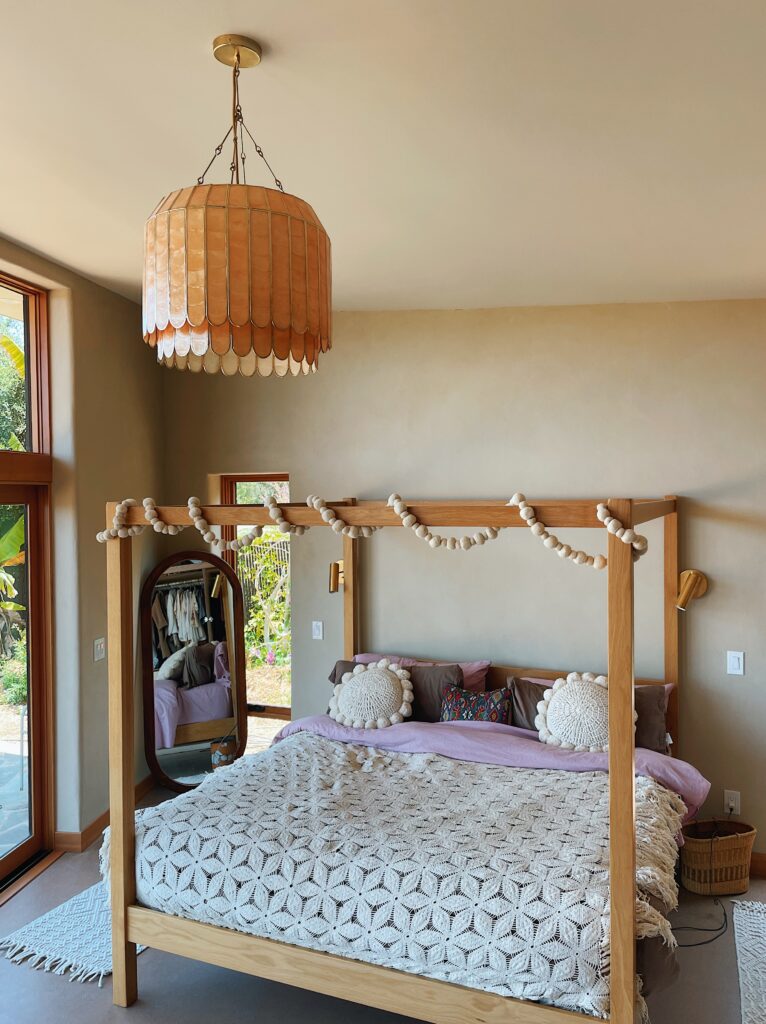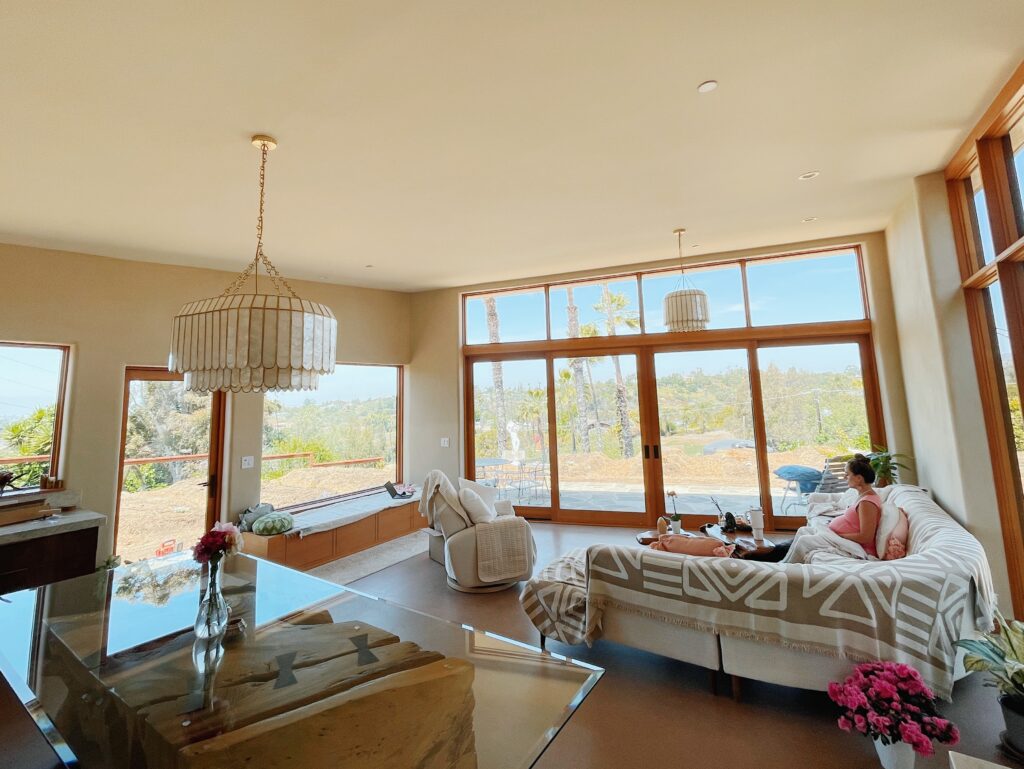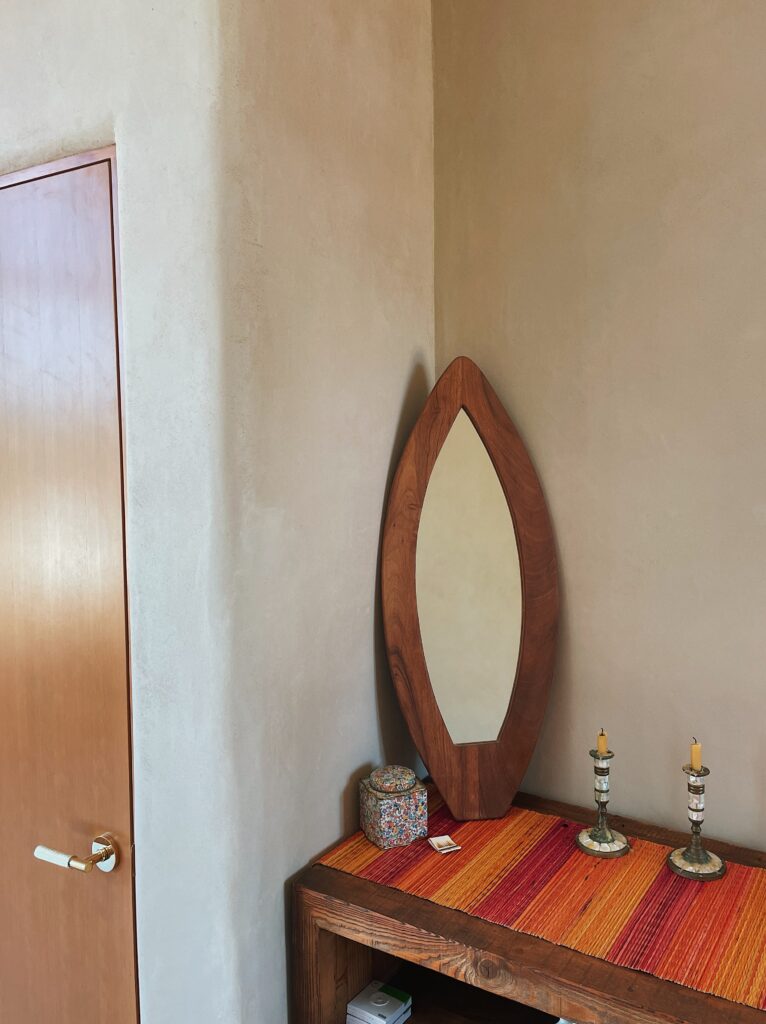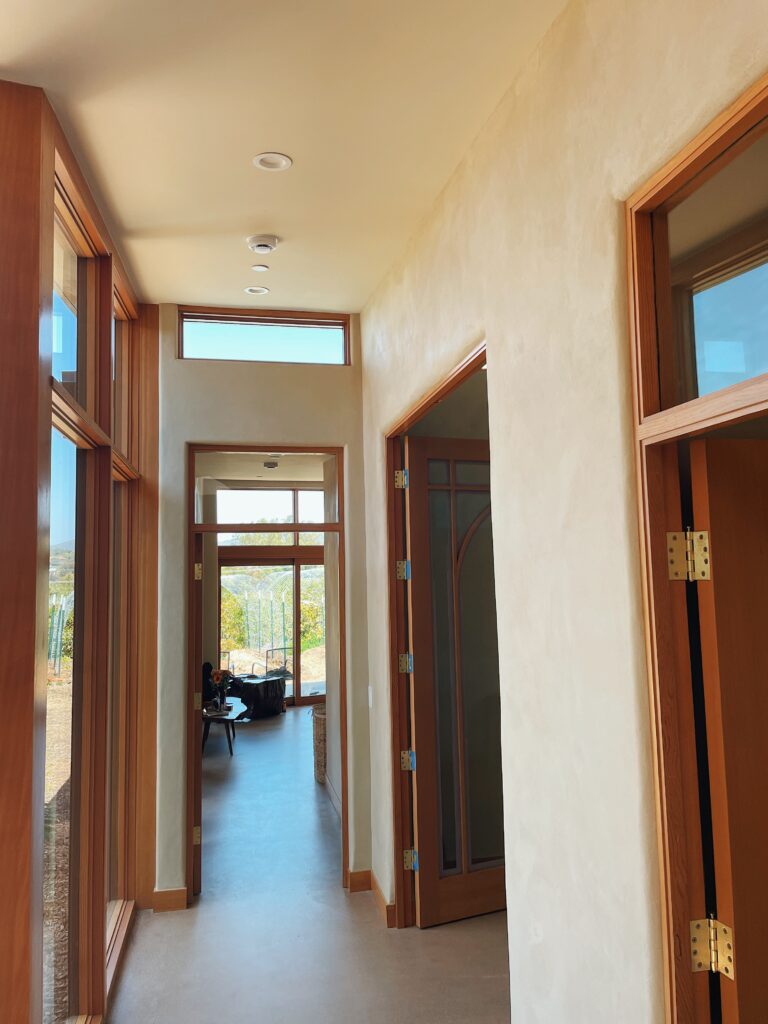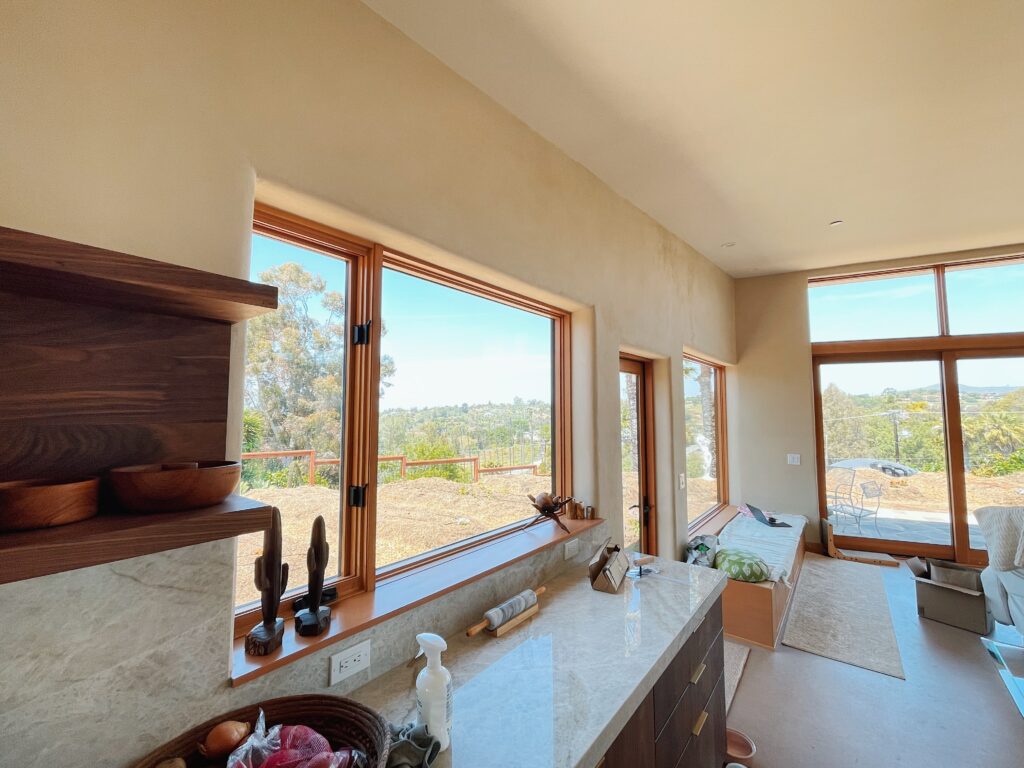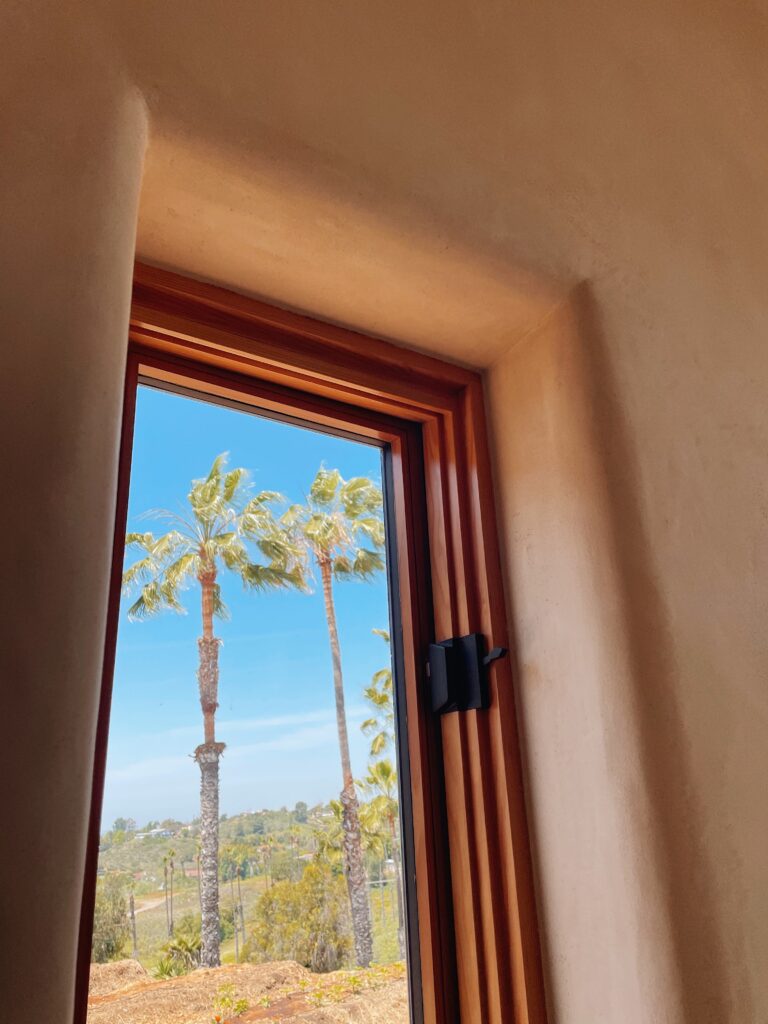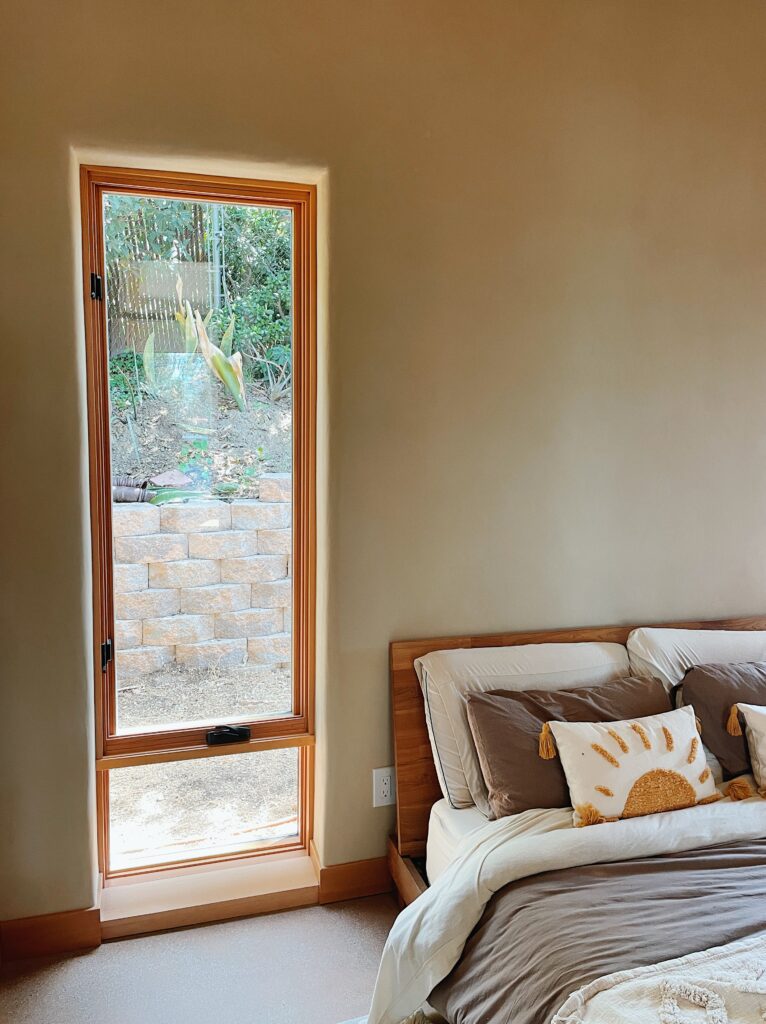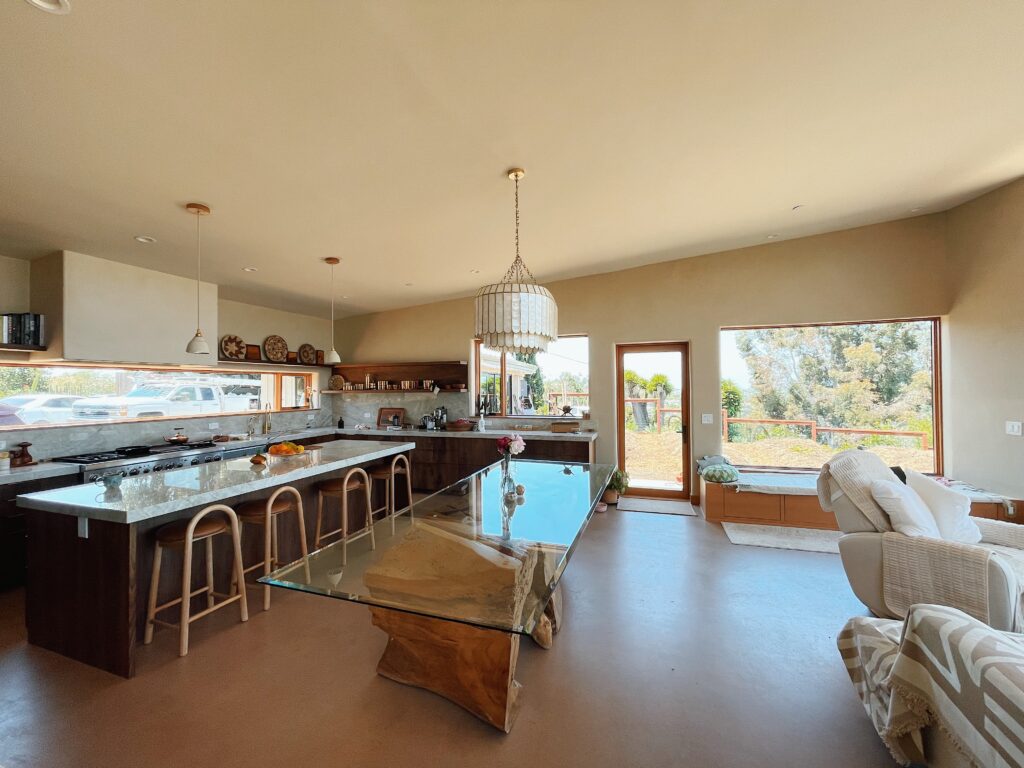Interior Clay Plaster
Private Client - Vista, CA
MudWorks Natural Building collaborated with other builders and contractors (listed below) to install artisan clay plasters and finishes on the interior walls of this new-construction home.
Project Contributors
- Plaster Lead: Nicholas Holmes, Holmes Ecological Design & Construction
- Artisan Plaster Crew: MudWorks Natural Building, Earth Light Build, Nicholas Holmes, Jessi H., Nathan W., and Wade L.
- Finish Plaster Supplier: Gold Hill Clay Plaster
- Architect: Hubbell & Hubbell
- Interior Design: Jayd K.
- Cabinetry: A Mano Co.
- Photography: Autumn Flower Creek
Project Details & Specs
Interior walls received wood lath directly over studs as a substrate for clay plaster. Base coat (about 3/4in thick) was mixed on-site using powdered clay from a nearby brick manufacturer, sand from a local materials yard, and straw from a feed store down the road. Exterior ICCF Block walls received a base coat of Structolite. Gold Hill Clay Plaster: Zenith was used for all finish coats.
Benefits of Clay Plaster
- Temperature Regulation: Thick clay plaster offers substantial thermal mass, meaning it will slowly absorb heat and release it when temperatures drop, reducing energy bills in both cold and warm seasons. [Source]
- Moisture & Humidity Regulation: Clay plaster requires no vapor barrier, meaning that moisture and condensation will not become trapped in the walls and lead to mold issues. Additionally, clay will naturally absorb moisture in the air and regulate humidity levels inside the home. [Source]
- Improved Indoor Air Quality: Clay walls “breathe” with zero VOC off-gassing, and lab tests show clay plaster can passively remove pollutants as air passes through. [Source]
- Acoustic Insulation: Thick clay plaster with a dense, textured surface diffuses and absorbs sound waves, softening echoes and ambient noise for a calmer space. [Source]
- Natural Beauty: There is simply nothing quite like the aesthetic of artisan natural plasters! Clay resonates deeply in the human psyche, and hand-troweled textures create warm, soulful, and unique walls that are not possible with drywall and flat paint. [Source]
- Fire Resistance: Clay plaster is inherently fireproof and non-combustible (Class A1), offering built-in passive fire protection to any wall assembly. [Source]
- Low Carbon Footprint: Natural materials like clay, sand, and straw have vastly lower embodied carbon than gypsum and paint finishes, making clay plaster a much more earth-friendly wall finish than conventional materials. [Source]
- Durability & Repairability: When properly applied, clay plaster can last for decades. Minor dings can be spot-repaired with the original mix—no full replastering required. [Source]
- Safe & Non-Toxic: Pure clay plaster contains no synthetic additives or solvents, emits zero VOCs, and can even trap odors and common indoor chemicals in its pores. Healthy for humans, healthy for the earth! [Source]


